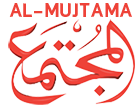Palestinian Resistance: Forged in Fire Featured
------------
Palestine
Who would have imagined that the “Stone Intifada” would evolve into the “Al-Aqsa Flood," a battle that shattered the myth of one of the most powerful armies in the region, armed with the latest and deadliest weapons and supported by the United States, Britain, France, Germany, and others?
It was not a mere coincidence; rather, it was the result of a long and complicated process of self-building, constructive criticism, conducting reviews, correcting the course, setting priorities, choosing the most competent, and, above all, relying on Allah and seeking His guidance.
The “Stone Intifada” (the first Intifada) that erupted on December 8, 1987, ignited the spark of jihad and resistance against the “Israeli” occupation. More than a thousand were martyred and three thousand were injured during that uprising, in exchange for the killing of only 160 enemy soldiers.
The stone was the first building block in the resistance's journey, developing its capabilities and capacities. It transitioned from the stone stage to white weapons, then to bullets, hand grenades, explosive devices, and martyrdom operations. The outcome was the launch of the “Second Intifada” on September 28, 2000, during which 4,412 Palestinians were martyred and around 50,000 wounded. In exchange, 1,069 “Israelis” were killed and 4,500 were injured. The “Second Intifada” ended in February 2005 with the establishment of the Israeli separation barrier in the West Bank and the withdrawal of the occupation from the Gaza Strip.
This triumph was not enough for the Palestinian resistance, nor did it rely on this success. It is a larger and more complex issue—a war for liberation and independence to reclaim all the land and cleanse the blessed “Al-Aqsa” Mosque from the Jews' desecration.
The resistance, with “Hamas” at its core, resumed the process of self-evaluation, identifying errors, exchanging experiences, learning from others' experiences, studying the science of war, adopting modern tactics, and developing military strategies.
It can be said that “Hamas” specifically impressed military experts worldwide when it adapted to the blockade conditions imposed on the Gaza Strip since 2006. It shifted from being a resistance faction to becoming a small, organized army. It now employs modern military structures with a chief of staff, operations rooms, formations of ground, naval, and air forces, supply and logistics units, special forces, reserve forces, frogmen, paratroopers, engineers, cyber security, snipers, an experienced intelligence apparatus, a powerful media machine, an influential military spokesperson, and a high-ranking political leadership.
The process of self-building continued, creating a new identity for the resistance that challenges the siege conditions. This involved building a complex network of tunnels, over 500 kilometers long, at various depths ranging from 15 to 70 meters. The tunnel network resembles a subway or a spider's maze, consisting of small, medium, and large tunnels with different and interconnected routes, along with control, command, and communication rooms, weapon storage, missile launch platforms, and offensive and defensive tunnels equipped with the “magic door” system that allows rocket launchers to exit and disappear suddenly. The tunnels also include booby traps and mechanisms for isolating damaged or detected tunnels.
In parallel, the resistance, which began with stones, entered a new era of manufacturing rockets. This industry evolved with local expertise and modest technology, marking a qualitative leap from the production of short-range missiles to medium- and long-range missiles equipped with explosive warheads capable of bypassing the Iron Dome and the enemy's air defense systems.
According to a study by the Jerusalem Center for Public Affairs, “Hamas” now manufactures a significant portion of its weapons, expands its research, develops drones and underwater torpedoes, engages in cyber warfare, and is on the verge of transitioning from producing unguided missiles to long-range precision missiles.
Questions arise: What will be the status of the Palestinian resistance in 10 years? What capabilities will it possess against the occupation? To what extent can it further develop after demonstrating the ability to invade settlements, target military sites, and execute a preemptive strike that cripples an adversary's intelligence and operational capabilities?
The present reality is legendary and unprecedented, as it is not a conventional war between two armies but rather a resistant faction consisting of thousands of fighters. It has succeeded in inflicting severe losses and a humiliating defeat on the “Israeli” occupation army, which had not been witnessed in nearly half a century.
The Palestinians present a profound lesson in self-building to the entire world. I dare say it is a lesson that will be studied by major armies and superpowers. Before that, it serves as a lesson for the Arab and Islamic nations on how to enhance self-esteem, stimulate capabilities, and achieve victory over their adversaries.Top of Form


